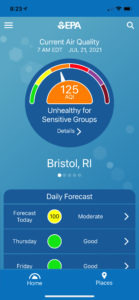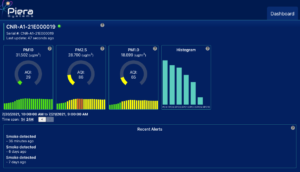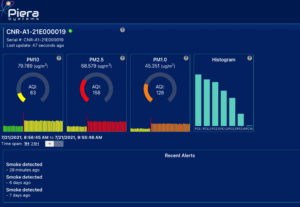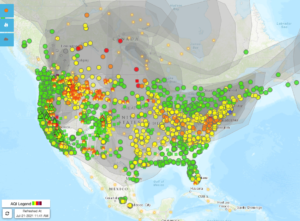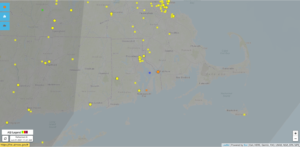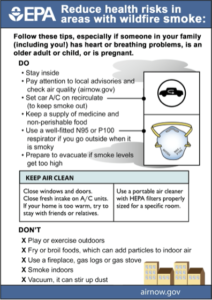Yesterday (7/20) I noticed that my Canāree A1 located in my office in Bristol, RI started reading AQI values ~120 (orange, unhealthy) after weeks of green values. I wondered why?
Went out for a cruise on Narragansett Bay from 7-9 pm and the air smelled like burnt wood, the sky was hazy with a yellow/orange moon. I overhear someone say it’s due to wildfire smoke. I think she’s mistaken.
This morning at 6:30 AM, Canāree continues to show unhealthy air. I take a 4.5 mile walk outdoors, same smell and the Boston NPR radio station states haze from wildfires in Western US (Oregon and California) would affect us all day. Checked AirNow, the EPA site and saw same warning with PM <2.5 being most of it. This station is in Fall River ~20 miles away.

